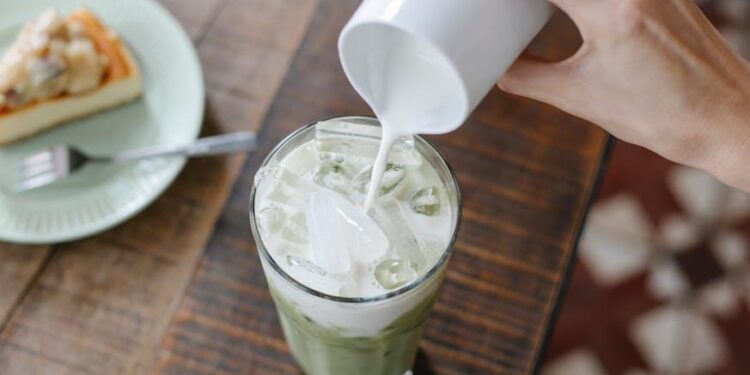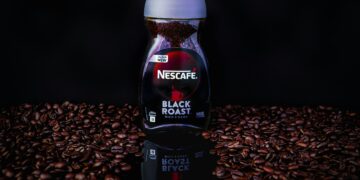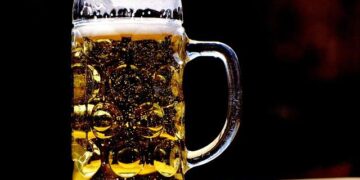Table of Contents
The Sunday Morning I Served My Guests Instant Coffee
It was 9 AM on a sunny Sunday, the kind of morning that feels custom-made for lingering conversation and a second cup of coffee.
My friends, who I’d been promising to host for weeks, were gathered in my kitchen, lured by the promise of my “famous” homemade cold brew.
I had made a massive, two-liter batch on Friday, steeping it for a full 20 hours with my favorite medium-roast beans.
It was, I thought, my masterpiece.
With a confident smile, I opened the fridge, poured the dark liquid over ice, and handed out the glasses.
The smiles on my friends’ faces faded after the first sip, replaced by a polite confusion.
I took a sip of my own.
It was awful.
The smooth, chocolatey notes I expected were gone, replaced by a flat, woody, almost musty taste.
It tasted like stale water that had once been near a coffee bean.
The batch was ruined.
The humiliation was acute.
After a decade of passionately brewing coffee at home, evolving from a casual drinker to someone who owned a burr grinder and a digital scale, I found myself in the ultimate walk of shame: reaching into the back of the cupboard for a dusty jar of instant coffee.
That moment was my breaking point.
It crystallized a frustration that had been brewing for years.
Why was the internet a black hole of conflicting advice? Some sources claimed cold brew lasts for a week, others two.1
Some said five to seven days was the limit.3
I was doing everything “right”—using good beans, filtering carefully—yet my delicious Friday brew was consistently undrinkable by Sunday.
It wasn’t just about the wasted coffee or money; it was about the death of a ritual, the promise of a perfect morning cup turning into a game of chance.
I was determined to find a real answer, not just another number, but a system.
This report is the result of that obsession.
It’s the story of how I stopped fighting a losing battle against time and learned to master the forces of decay.
It’s the framework that allows me to now, without fail, make vibrant, delicious cold brew that stays that way for a full two weeks.
Forget the conflicting advice.
This is the last guide you’ll ever need.
In a Nutshell: A Realistic Guide to Cold Brew Shelf Life
Before we dive deep, here is the straightforward answer you’ve been looking for.
The longevity of your cold brew depends almost entirely on how you store it and, most importantly, whether it’s a concentrate or diluted.
| Brew Type | Optimal Storage | Peak Flavor Window | Maximum Recommended Shelf Life |
| Undiluted Concentrate (Black) | Airtight glass container, refrigerated below 41°F (5°C) | 1–7 days | 10–14 days |
| Diluted with Water (Black) | Airtight glass container, refrigerated below 41°F (5°C) | 1–2 days | 2–3 days |
| Diluted with Milk/Cream/Sugar | Airtight glass container, refrigerated below 41°F (5°C) | Within 24 hours | 2 days |
Data compiled from sources.13
My Epiphany: Why We’re Asking the Wrong Question About Cold Brew
My journey into the cold brew rabbit hole began with a simple, frustrating question: “Why does my coffee go bad so fast?” I chased every variable.
I tried different beans, steeping times, and filtration methods.
Nothing worked consistently.
The flavor cliff always arrived, unannounced, usually around day three.
The real breakthrough came from a place I never expected: a deep dive into the professional food preservation industry.
I started reading about how large-scale food producers extend the shelf life of everything from juice to pre-packaged meals.
They didn’t have a single magic bullet.
Instead, they used a concept called “hurdle technology”.5
The philosophy is simple but profound.
Instead of trying to build one single, impenetrable wall to stop spoilage, they create a series of smaller, manageable hurdles.
Each hurdle—like adjusting temperature, reducing water content, controlling oxygen, or lowering pH—slows down the microorganisms and chemical reactions responsible for decay.
No single hurdle has to be extreme, but combined, they create an environment where spoilage is slowed to a crawl.5
This was my epiphany.
I realized I was asking the wrong question.
Cold brew doesn’t just “go bad” at some predetermined moment.
From the second your coffee grounds hit the water, your brew is in a constant, slow-motion state of degradation.
The real question isn’t “How long does it last?” It’s “How can I effectively manage the rate of degradation to extend both the safety and the deliciousness of my cold brew?”
This shift in perspective changed everything.
I was no longer a passive victim of spoilage; I was an active manager of freshness.
My goal was to build my own “hurdle system” for my cold brew pitcher.
The rest of this report is that system—a playbook for erecting the five critical hurdles that will keep your cold brew vibrant and delicious for up to two weeks.
The Unseen Enemies in Your Pitcher: A Brewer’s Guide to the Science of Spoilage
To win a war, you must first know your enemy.
In the world of cold brew, the battle for freshness is fought on three distinct fronts simultaneously: chemical degradation, microbiological contamination, and sensory decay.
Understanding these forces is the first step toward controlling them.
Enemy #1: Oxidation – The Thief of Flavor
The primary culprit behind that flat, stale, and sometimes metallic taste in old coffee is a chemical reaction called oxidation.8
It’s the same process that turns a sliced apple brown or makes old bread taste like cardboard.
When oxygen molecules in the air come into contact with the delicate fats (lipids) and aromatic compounds in your brewed coffee, they trigger a chain reaction that breaks down these molecules, fundamentally changing their structure and taste.8
This process is a relentless thief, stealing the complex, nuanced flavors you worked so hard to extract.
Its work is accelerated by three key factors: oxygen exposure, light, and heat.8
This is the scientific reason why simply leaving a pitcher of cold brew on the counter, or even in a loosely covered container in the fridge, is a recipe for rapid flavor loss.
One of the inherent advantages of cold brew is that its gentle, heat-free extraction process pulls out fewer of the specific compounds that are most susceptible to rapid oxidation.
This is a major reason why cold brew has a more stable flavor profile and longer shelf life than hot-brewed coffee that has been cooled and stored.12
However, the key word is
slower.
The oxidative process still happens, and without proper control, it will inevitably rob your brew of its vibrancy.9
Enemy #2: Microbial Growth – The Safety Hazard You Can’t Ignore
While oxidation is a matter of quality, microbial growth is a matter of safety.
Here lies the most critical and often misunderstood aspect of cold brew longevity.
Because it is brewed without a heat-kill step and has a relatively low acidity, health authorities classify cold brew as a Time/Temperature Control for Safety (TCS) food.14
This puts it in the same category as foods like dairy or cooked meats, which require careful handling to prevent the growth of harmful microorganisms.
Hot coffee has two built-in defenses: the sterilizing effect of near-boiling water and a higher acidity (lower pH), which creates a hostile environment for many bacteria.16
Cold brew lacks both.
Its typical pH ranges from 4.85 to 5.10, which is not acidic enough to inhibit the growth of all potential pathogens.16
When cold brew is left in the temperature “danger zone”—between 41°F (5°C) and 140°F (60°C)—bacteria, yeasts, and molds can multiply.14
In fact, studies have shown that dangerous bacteria like
E.
coli can be present in cold brew stored at room temperature in less than 24 hours.19
It’s crucial to understand that these microorganisms don’t spontaneously generate.
They are introduced through contamination—from unclean brewing equipment, unwashed hands, the water source, or even the coffee beans themselves.16
This is why sanitation is not just a suggestion; it’s a food safety imperative.
While research indicates that pathogenic bacteria don’t tend to grow rapidly in properly refrigerated cold brew, they can survive.
Studies have found that pathogens like Salmonella and Listeria can persist in refrigerated cold brew for over a week.16
This makes proper refrigeration and strict sanitation non-negotiable for ensuring your brew is safe to drink, not just pleasant-tasting.
Enemy #3: Aroma Decay – The Ghost in the Machine
Have you ever noticed that day-old coffee just doesn’t smell as good? That’s not your imagination.
A huge portion of what we perceive as flavor is actually aroma, which is delivered by hundreds of different volatile organic compounds (VOCs).21
These molecules are incredibly delicate and ephemeral.
The moment your brew is finished, they begin to either escape into the air (a process called outgassing) or break down into less aromatic compounds.8
This process, known as sensory staling, is distinct from both oxidation and microbial spoilage, though it happens alongside them.
Scientific studies using sensory panels have precisely documented this decline.
Even when a brew is microbiologically safe and stored to minimize oxidation, its flavor profile inevitably changes over time.
The most common changes noted in refrigerated cold brew are a decrease in desirable bitterness and a steady increase in undesirable notes described as sour, fermented, winey, papery, or stale.23
This is directly linked to the chemical degradation of key compounds like chlorogenic acids and the simple loss of the most fragrant VOCs.23
This distinction between quality and safety is the key to understanding all the conflicting advice online.
A batch of cold brew might be perfectly safe to drink on day 14, but it might only be truly delicious through day 7.
One person’s acceptable “stale” is another’s “undrinkable.” The goal of the Controlled Degradation playbook is to push back the timelines on all three fronts, extending both the window of peak deliciousness and the window of absolute safety.
The Controlled Degradation Playbook: My 5 Pillars for Two-Week Cold Brew
Welcome to the heart of the system.
This playbook is built on the “hurdle technology” philosophy from food science.
Each of the five pillars is a hurdle we will strategically place in the path of the three enemies: oxidation, microbial growth, and aroma decay.
You don’t need expensive lab equipment, just a mindful approach.
Mastering these five pillars is the key to transforming your cold brew from a fleeting pleasure into a reliable, long-lasting delight.
Pillar 1: The Fortress — Mastering Your Storage Environment
The Goal: To build an impenetrable barrier against oxygen and light, the two primary catalysts for the chemical reactions of oxidation that make coffee taste stale.
The Method: Store your cold brew exclusively in airtight, opaque, glass containers.
Let’s break down why each of these elements is non-negotiable.
- Airtight: This is your number one defense against oxidation. Every time oxygen molecules interact with your coffee, they degrade its flavor.8 A pitcher with a loose-fitting lid or a simple plastic wrap cover allows for a constant exchange of air, fueling the staling process. The solution is a container with a robust, positive seal. Glass mason jars with two-part lids, flip-top bottles with rubber gaskets, or dedicated cold brew carafes with high-quality seals are all excellent choices.2 For those seeking the ultimate defense, using a vacuum-sealing device to remove air from the container can further extend flavor stability.2
- Opaque/UV-Resistant: Light, particularly the ultraviolet (UV) spectrum, acts as an energy source that dramatically accelerates the chemical reactions of oxidation.8 Storing your cold brew in a clear glass container on the fridge door, where it’s constantly exposed to the interior light, is one of the most common and damaging mistakes. The ideal choice is a container made of dark amber or cobalt glass, or an opaque ceramic bottle, as these materials block UV rays.27 If you only have clear glass containers, you can still create a fortress by storing them at the very back of your refrigerator, shielded from light.
- Glass: The material of your fortress matters. Glass is the superior choice because it is non-porous and chemically inert. This means it won’t absorb flavors from previous batches or impart any unwanted “plasticky” taste into your coffee.2 While high-quality, BPA-free plastic is an acceptable alternative, it can stain and retain odors over time. Some metals can react with the natural acids in coffee, altering its taste, making glass the most reliable and pure choice for long-term storage.
Pillar 2: The Deep Chill — The Non-Negotiable Role of Temperature
The Goal: To use cold to dramatically slow down the rate of all degradation processes—chemical, microbial, and sensory—by reducing the kinetic energy of molecules.
The Method: Maintain a consistent refrigerator temperature at or below 41°F (5°C).
This isn’t just a casual suggestion; it’s a critical threshold rooted in food safety and chemistry.
- Slowing Down Chemistry: The relationship between temperature and the speed of chemical reactions is described by a principle known as the Arrhenius equation. In simple terms, it means that for every 10°C (18°F) drop in temperature, the rate of many chemical reactions is reduced by half or more.8 By moving your cold brew from room temperature (around 70°F/21°C) to a proper refrigerator temperature (below 41°F/5°C), you are slamming the brakes on oxidation and other flavor-degrading reactions.
- Inhibiting Microbes: This temperature—41°F (5°C)—is the upper limit of the official food safety cold zone.14 Storing your cold brew below this temperature moves it out of the microbial “danger zone,” significantly inhibiting the growth and proliferation of most spoilage bacteria, yeasts, and molds.12 This is the single most important hurdle for ensuring the safety of your brew.
- Consistency is Key: It’s not just about the absolute temperature, but its stability. Temperature fluctuations, such as those experienced on a refrigerator door that is opened frequently, can accelerate spoilage.2 For maximum stability, store your cold brew fortress in the main compartment of your refrigerator, preferably towards the back where the temperature is coldest and most consistent.27
Pillar 3: The Power of Purity — Why Concentrate is King
The Goal: To create a more chemically stable liquid and minimize the introduction of additional variables that accelerate spoilage.
The Method: Always brew and store your cold brew as an undiluted concentrate.
Only dilute it with water, ice, or milk at the moment you are ready to serve it.
This is perhaps the most impactful pillar for extending shelf life.
- The Shelf Life Cliff: The difference in longevity between concentrate and ready-to-drink brew is not subtle; it’s a cliff. A properly stored, undiluted concentrate can remain delicious for 10-14 days. The moment you dilute it—even with pure water—that window shrinks dramatically to just 2-3 days. If you add dairy or sweeteners, you’re looking at a maximum of 48 hours before quality and safety decline.13
- The Science of Dilution: Why is the effect so dramatic?
- Water Activity and pH: A coffee concentrate has a higher density of dissolved coffee solids. This effectively “binds up” water molecules, lowering the “water activity” of the solution. Microorganisms need available water to thrive, so lower water activity makes for a less hospitable environment.5 When you dilute the concentrate, you increase the water activity, essentially rolling out the welcome mat for microbes. Dilution can also slightly raise the pH, moving it further away from an acidic state that inhibits bacterial growth.2
- Introducing Contaminants and Accelerants: Every addition to your concentrate is a potential source of contamination. The water you add contains its own microbial load and dissolved oxygen. Milk and cream are even more problematic, as they are rich in sugars (lactose) and proteins that serve as a perfect food source for bacteria, drastically shortening the brew’s lifespan.2 By storing only the pure concentrate, you maintain the most stable and least hospitable environment for spoilage.
Pillar 4: The Clean Start — Setting Your Brew Up for Success
The Goal: To begin the brewing process with the lowest possible microbial load and the highest possible flavor potential.
You cannot preserve what you never had in the first place.
The Method: Be meticulous about your inputs.
This means using impeccably clean equipment, high-quality water and beans, and the correct grind size.
- Sanitation is Paramount: Since cold brewing lacks the heat-sterilization step of hot coffee, you must begin with a clean slate. Before every batch, thoroughly wash all your equipment—the brewing vessel, storage containers, filters, and any stirring utensils—with hot, soapy water and rinse well.12 Think of it like performing surgery; you want to minimize the introduction of any foreign contaminants from the very start.
- Water Quality: Your finished cold brew is over 98% water, so the quality of that water has a significant impact on the final taste. Tap water can contain chlorine, minerals, or other contaminants that can create off-flavors or react negatively with the coffee compounds.35 Using filtered or bottled spring water is a simple but powerful upgrade that ensures a cleaner, more stable final product.37
- Fresh, Whole Beans: The clock on coffee freshness starts ticking the moment the beans are roasted, and it accelerates exponentially the moment they are ground. Pre-ground coffee has a vastly increased surface area exposed to oxygen, causing it to lose precious volatile aromas and begin oxidizing long before it even reaches your brewer.3 For maximum flavor, always start with whole beans that were roasted within the last two to three weeks and grind them yourself immediately before brewing.40
- The Right Grind: The grind size is critical for proper extraction over a long steeping period. A grind that is too fine will over-extract, releasing excessive bitter compounds and creating a harsh, astringent brew that only gets worse as it sits.39 A grind that is too coarse may under-extract, resulting in a weak, sour, and watery coffee.42 The ideal is a
coarse to medium-coarse grind, similar to the consistency of coarse sea salt.35 Using a quality burr grinder is highly recommended, as it produces a much more uniform particle size than a blade grinder, leading to a more even and balanced extraction.35
Pillar 5: The Sensory Check — Becoming the Master of Your Brew
The Goal: To move beyond blindly following timelines and learn to trust your own senses—your most sophisticated analytical tools—to identify when your cold brew is at its peak, when it’s fading, and when it’s spoiled.
The Method: Engage with your brew.
Smell it and taste it regularly throughout its life in your fridge.
Over time, you will become intimately familiar with its evolution.
- Signs of Flavor Degradation (A Quality Issue): A perfect, fresh cold brew should be smooth, rich, and often carry a natural sweetness. As it ages, be mindful of the subtle shifts. The first sign of decline is often a loss of the bright, aromatic top notes. This can be followed by the emergence of undesirable flavors. Listen for:
- Sourness or Acidity: A sharp, tangy note that wasn’t there initially.
- Fermented or Winey Notes: A slightly boozy or overripe fruit character.
- Flatness: A general lack of complexity, as if the flavor has been hollowed out.
- Papery, Woody, or Stale Notes: A taste reminiscent of cardboard or wet wood, a sure sign of significant oxidation.3
- Signs of Spoilage (A Safety Issue): These are red flags that mean the brew must be discarded immediately. There is no salvaging a contaminated batch. Watch for:
- Aroma: A sharp, vinegary, rancid, or moldy smell.
- Appearance: A cloudy, murky, or hazy look to the liquid that wasn’t there before.
- Surface: Any visible mold (often white or greenish “fuzzy” spots), a slimy or oily film floating on top, or unusual clumping.2
By paying attention, you transform from a passive consumer into an active, knowledgeable brewer.
This sensory feedback loop allows you to diagnose issues with your process and refine your technique, which is the true path to mastery.
The Brewer’s Troubleshooting Guide
This table translates the science of degradation into a practical diagnostic tool.
Use your senses to identify the problem, understand the likely cause, and implement the correct solution.
| The Problem (Your Sensory Cue) | The Likely Cause | The Solution (Your Action) |
| Tastes Bitter, Harsh, or Astringent | Over-extraction | Use a coarser grind. Reduce the steeping time. |
| Tastes Sour, Thin, or Watery | Under-extraction | Use a finer grind (but not too fine). Increase the steeping time. |
| Tastes Flat, Stale, or like Cardboard | Oxidation | Ensure your storage container is truly airtight. Minimize headspace by using a smaller container or filling it closer to the top. Keep it shielded from light. |
| Visible Mold, Film, or Murky Appearance | Microbial Contamination | DISCARD IMMEDIATELY. Do not attempt to drink it. Thoroughly sanitize all brewing and storage equipment before your next batch. Review your sanitation practices (Pillar 4). |
Information compiled from sources.2
From Theory to Practice: My Foolproof Two-Week Cold Brew Ritual
Knowing the pillars is one thing; integrating them into a seamless ritual is another.
This is the exact process I follow every other Sunday, a routine born from failure and refined into a foolproof system that yields consistently delicious and long-lasting cold brew.
Step 1: The Prep (Pillar 4: The Clean Start)
My ritual begins with preparation.
I select a bag of fresh, whole-bean medium-roast coffee, checking the roast date to ensure it’s within that 7-14 day sweet spot.40 I then gather my equipment: a large mason jar for brewing, an amber glass bottle with a swing-top seal for storage, and a fine-mesh strainer lined with a paper coffee filter.
I wash everything meticulously with hot, soapy water and rinse thoroughly.12 Finally, I fill a separate pitcher with water from my countertop filter, allowing it to come to room temperature.36
Step 2: The Grind & Steep (Pillar 4: The Clean Start)
Precision is key here.
I use a 1:8 coffee-to-water ratio by weight, which creates a strong, versatile concentrate.44 For a 1-liter batch, that’s 125 grams of coffee to 1000 grams (1 liter) of water.
I set my burr grinder to a medium-coarse setting and grind the 125g of beans.35 The grounds go directly into my clean mason jar.
I pour in the room-temperature water, stirring gently with a sanitized spoon to ensure all the grounds are fully saturated, leaving no dry pockets.44
Step 3: The Chill (Pillar 2: The Deep Chill)
Once saturated, I seal the mason jar tightly and place it immediately into the coldest part of my refrigerator—not on the counter.
While some recipes call for room-temperature steeping, this introduces an unnecessary food safety risk by leaving the brew in the microbial “danger zone” for an extended period.4 I let it steep in the cold for a full 24 hours.
The longer, colder steep extracts a smoother, sweeter flavor profile.
Step 4: The Filter & Store (Pillar 1: The Fortress & Pillar 4: The Clean Start)
After 24 hours, it’s time to separate the liquid gold from the grounds.
I place my fine-mesh strainer, lined with a paper filter, over a large bowl and slowly pour the contents of the mason jar through it.27 The double-filtration method ensures a crystal-clear concentrate with no sediment.
I then carefully funnel the finished concentrate into my clean, amber glass storage bottle, filling it as close to the top as possible to minimize headspace and oxygen exposure.
The swing-top cap provides an excellent airtight seal.27
Step 5: The Serve (Pillar 3: The Power of Purity)
The sealed bottle of concentrate goes right back into the coldest part of the fridge.
For the next two weeks, my morning coffee is effortless.
I pour a few ounces of the concentrate over ice and dilute it with cold water or a splash of oat milk, preparing only the single serving I’m about to drink.13 The bulk of my brew remains pure, protected, and stable in its fortress.
This ritual has completely transformed my coffee life.
Gone are the days of flavor roulette and the dreaded instant coffee walk of shame.
I now have a constant supply of vibrant, delicious cold brew that I can enjoy with confidence and proudly serve to any guest, any day of the week.
The Cold Brew Armory: Answering Your Toughest Questions
As you master the fundamentals, new questions will arise.
Here are the answers to some of the most common advanced queries, grounded in the science we’ve discussed.
Q: Does the coffee’s roast level affect its shelf life?
A: Indirectly, yes, but not in the way you might think.
The roast level doesn’t inherently change the rate of microbial spoilage, but it significantly impacts extraction, which in turn affects the flavor stability of the final brew.
Lighter roasts are physically denser and less porous.
This makes them more challenging to extract fully with cold water, sometimes resulting in a brew that tastes sour or “thin” if the grind isn’t fine enough or the steep time isn’t long enough.39
Darker roasts are more porous and brittle, extracting very easily.
This makes them consistent and forgiving, but their flavor profile can be less complex and more dominated by roasty, smoky notes.48
Many experienced brewers find that a well-developed
medium roast offers the best of both worlds: it has enough solubility for a balanced extraction and retains enough of the bean’s original character to create a complex flavor that holds up well over time in storage.20
Ultimately, achieving a proper, balanced extraction is more critical to flavor longevity than the specific roast level itself.
Q: Can I freeze my cold brew to make it last longer?
A: Yes, freezing is a perfectly safe way to dramatically extend the shelf life of cold brew for several months, and it’s an excellent strategy for preventing waste.2
However, it comes with a significant trade-off in quality.
The process of freezing and thawing can damage the delicate compounds that contribute to flavor and aroma, often resulting in a final product that tastes muted, flat, or less complex than its fresh counterpart.3
The best method for freezing is to pour the concentrate into ice cube trays.
This creates convenient, pre-portioned servings and minimizes the negative effects on texture.27
Consider freezing a tool for preservation, not for maintaining peak flavor.
Q: Why does store-bought, ready-to-drink cold brew last for months on a shelf?
A: The vast difference in shelf life between homemade and commercial cold brew comes down to industrial-scale food preservation technologies that are unavailable to the home brewer.
Commercial producers employ a combination of powerful hurdles to create a shelf-stable product.
These often include:
- Pasteurization: The coffee is heat-treated (either through high-temperature, short-time methods or retort canning) to kill virtually all microorganisms.31
- Aseptic Packaging: The sterilized coffee is packaged in a completely sterile environment into pre-sterilized containers (like cans or Tetra Paks) to prevent any re-contamination.50
- Nitrogen Flushing: Before sealing, the container is flushed with inert nitrogen gas. This displaces all the oxygen, effectively halting the process of oxidation.49
These processes combine to create a microbiologically safe and chemically inert product that can last for many months at room temperature.
Q: Is it really unsafe to steep cold brew on the counter?
A: From a strict food safety standpoint, steeping cold brew at room temperature for 12-24 hours is not recommended.
This practice places the brew squarely in the microbial “danger zone” (41°F – 140°F or 5°C – 60°C) for an extended period, creating an ideal environment for any contaminating bacteria to multiply.14
While it’s true that many people do this without getting sick, it carries an unnecessary and avoidable risk.
The coffee itself has some antimicrobial properties, but they are not a foolproof guarantee against contamination.
Steeping in the refrigerator is the safest and most scientifically sound method, as it keeps the brew below the critical temperature threshold for the entire process.19
Conclusion: Your New Philosophy of Freshness
I often think back to that disastrous Sunday morning, to the look on my friends’ faces and the sad hiss of the instant coffee jar opening.
That moment of failure wasn’t an end; it was the beginning of a new understanding.
It forced me to look beyond the surface-level tips and tricks and into the fundamental science of why things go wrong.
The “Controlled Degradation” philosophy is more than just a set of rules; it’s a new way of thinking about your role as a brewer.
You are not a passive victim of time, hoping your coffee survives another day.
You are the architect of its preservation.
You are the one who builds the fortress, commands the chill, and insists on purity.
Each pillar in the playbook is a conscious choice you make to defend the flavor and safety of your brew.
This framework is your key to ending the cycle of wasted coffee and disappointing mornings.
It is the path from frustration to confidence, from chance to consistency.
You now possess not just a recipe, but a complete mental model for brewing perfection.
Embrace it, practice it, and make it your own.
The days of gambling on your morning cup are over.
The era of mastery has begun.
Works cited
- chamberlaincoffee.com, accessed August 6, 2025, https://chamberlaincoffee.com/blogs/inspiration/how-long-does-cold-brew-last-here-s-the-real-story#:~:text=How%20long%20does%20cold%20brew%20last%20in%20the%20fridge%3F,two%20weeks%20a%20reasonable%20standard.
- The Shelf Life of Cold Brew: How Long Does It Last? – Dark Horse Coffee Company, accessed August 6, 2025, https://www.darkhorsecoffeecompany.com/blogs/the-three-gs-blog-grit-grind-and-gratitude/the-shelf-life-of-cold-brew-how-long-does-it-last
- How long does cold brew last? – Breville, accessed August 6, 2025, https://www.breville.com/us/en/blog/coffee-and-espresso/how-long-does-cold-brew-last.html
- How long does cold brew last and where to store it? – YouTube, accessed August 6, 2025, https://www.youtube.com/watch?v=YTMqGLjEgZ8
- Factors Influencing Food Spoilage and Preservation – Food Safety Institute, accessed August 6, 2025, https://foodsafety.institute/food-microbiology/factors-influencing-food-spoilage-preservation/
- Fruit and vegetable processing – Ch04 Methods of reducing deterioration, accessed August 6, 2025, https://www.fao.org/4/v5030e/v5030e09.htm
- Food preservation – Nofima, accessed August 6, 2025, https://nofima.com/worth-knowing/food-preservation/
- How Coffee Oxidation Affects Your Daily Brew’s Flavor And Health Benef – Barista Life, accessed August 6, 2025, https://baristalife.co/blogs/blog/coffee-oxidation-process
- The Science Behind Cold Brew’s Shelf Life – Tightvac, accessed August 6, 2025, https://www.tightvac.com/blogs/blog/the-science-behind-cold-brew-s-shelf-life-3
- The Impact of Freshness on Flavor in Coffee – podmkr.com |, accessed August 6, 2025, https://podmkr.com/the-impact-of-freshness-on-flavor-in-coffee/
- Fruit and vegetable processing – Ch03 Deterioration factors and their control, accessed August 6, 2025, https://www.fao.org/4/v5030e/V5030E08.HTM
- How Long Does Cold Brew Last? – San Francisco Bay Coffee, accessed August 6, 2025, https://sfbaycoffee.com/blogs/articles/how-long-does-cold-brew-last
- Does Cold Brew Coffee Go Bad & How To Make It Last?, accessed August 6, 2025, https://www.rimecoldbrew.com/does-cold-brew-coffee-go-bad-how-to-make-it-last/
- Cold Brew Coffee Fact Sheet, accessed August 6, 2025, https://datcp.wi.gov/Documents2/ColdBrewFactSheet.pdf
- Cold Brew Coffee Safety HACCP 2022, accessed August 6, 2025, https://www.pcchd.org/DocumentCenter/View/2439/Cold-Brew-Coffee-Safety-HACCP-2022
- New study on cold brew food safety: Why coffee shops should pay attention, accessed August 6, 2025, https://perfectdailygrind.com/2024/02/new-study-on-cold-brew-coffee-food-safety/
- Can cold brew coffee make you sick? – CAES Newswire, accessed August 6, 2025, https://newswire.caes.uga.edu/story/10365/cold-brew-coffee.html
- Food spoilage – Wikipedia, accessed August 6, 2025, https://en.wikipedia.org/wiki/Food_spoilage
- How long can cold brew coffee last before it becomes dangerous? – Hardtank, accessed August 6, 2025, https://hardtank.com/2025/05/13/how-long-can-cold-brew-coffee-last/
- Current Challenges of Cold Brew Coffee—Roasting, Extraction, Flavor Profile, Contamination, and Food Safety – MDPI, accessed August 6, 2025, https://www.mdpi.com/2078-1547/11/2/26
- The Chemistry of Aroma: Storage, Brewing, and Coffee Volatiles, accessed August 6, 2025, https://coffee-consulate.com/en/blog/The-Chemistry-of-Aroma
- Coffee Flavor: A Review – MDPI, accessed August 6, 2025, https://www.mdpi.com/2306-5710/6/3/44
- An investigation of the shelf life of cold brew coffee and the influence of extraction temperature using chemical, microbial, and sensory analysis – PMC, accessed August 6, 2025, https://pmc.ncbi.nlm.nih.gov/articles/PMC10867521/
- Tweaking Coffee’s Flavor Chemistry, accessed August 6, 2025, https://library.sweetmarias.com/tweaking-coffees-flavor-chemistry/
- The Shelf Life Of Cold Brew Coffee And 3 Ways To Extend It– Wake …, accessed August 6, 2025, https://www.wakethecrewcoffee.com/blogs/news/the-shelf-life-of-cold-brew-coffee-and-3-ways-to-extend-it
- How Long Can You Keep Cold Brew Coffee in the Refrigerator? Experts Explain, accessed August 6, 2025, https://www.marthastewart.com/8146833/how-long-cold-brew-lasts-refrigerator-storage-tips
- Cold Brew Storage Tips – Buddha’s Cup, accessed August 6, 2025, https://buddhascup.com/blogs/kona-coffee-blog/cold-brew-storage-tips
- Storing Your Favorite Cold Brew – Wandering Bear Coffee, accessed August 6, 2025, https://wanderingbearcoffee.com/blogs/articles/storing-cold-brew-coffee
- Bask Food Preservation and Deterioration Modes, accessed August 6, 2025, https://www.princeton.edu/~ota/disk3/1979/7911/791113.PDF
- Cold Brew Shelf Life: How Long It Lasts and How to Keep It Fresh – Birch Glen Roasters, accessed August 6, 2025, https://birchglenroasters.com/blogs/news/cold-brew-shelf-life-how-long-it-lasts-and-how-to-keep-it-fresh
- What’s the Shelf Life for Cold Brew Coffee? – The Bottle Blog, accessed August 6, 2025, https://blog.bottlestore.com/whats-the-shelf-life-for-cold-brew-coffee/
- How To Store Cold Brew Coffee So It Preserves For A Long Time – DarkHorseCoffeeCompany, accessed August 6, 2025, https://www.darkhorsecoffeecompany.com/blogs/coffee/how-to-store-cold-brew-coffee
- How Long Does Cold Brew Last? And How to Prolong Its Shelf Life! – BigCupOfCoffee.com, accessed August 6, 2025, https://bigcupofcoffee.com/how-long-does-cold-brew-last/
- Cold Brew Coffee Shelf Life: Complete Storage Guide, accessed August 6, 2025, https://baristalife.co/blogs/blog/cold-brew-coffee-shelf-life
- Avoid Common Cold Brew Mistakes — Grab Coffee Gear From Fellow, Brita, and OXO, From $8 – Food & Wine, accessed August 6, 2025, https://www.foodandwine.com/cold-brew-gear-for-better-coffee-amazon-11772829
- 5 Iced Coffee Mistakes You’re Probably Making, According to a Master Barista – EatingWell, accessed August 6, 2025, https://www.eatingwell.com/article/7836007/iced-coffee-mistakes-youre-probably-making-according-to-a-master-barista/
- Cold Brew Concentrate: Can it go bad? – Aerial Resupply Coffee, accessed August 6, 2025, https://aerialresupplycoffee.com/blogs/the-resupply-blog/cold-brew-concentrate-can-it-go-bad
- Grinding Coffee Beans: Physical Or Chemical Change? – Vina Nha Trang, accessed August 6, 2025, https://vinanhatrang.com/grinding-coffee-beans-physical-or-chemical-change/
- Having Trouble With Your Cold Brew Coffee? Here Are 5 Tricks To Try – JavaPresse, accessed August 6, 2025, https://www.javapresse.com/blogs/cold-brew/having-trouble-with-your-cold-brew-coffee-here-are-5-tricks-to-try
- Is Your Coffee Too Fresh? – Clive Coffee, accessed August 6, 2025, https://clivecoffee.com/blogs/learn/is-your-coffee-too-fresh
- The Mistake You Need To Avoid For Better Cold Brew At Home – Chowhound, accessed August 6, 2025, https://www.chowhound.com/1731713/avoid-mistake-better-cold-brew-coffee-home/
- 10 Mistakes Everyone Makes With Homemade Cold Brew, According To An Expert Barista, accessed August 6, 2025, https://www.foodie.com/1528341/mistakes-steeping-cold-brew-list/
- How to Cold Brew Coffee – American Homebrewers Association, accessed August 6, 2025, https://homebrewersassociation.org/how-to-brew/cold-brew-coffee-adding-coffee-beer/
- Guide To Cold Brew – Counter Culture Coffee, accessed August 6, 2025, https://counterculturecoffee.com/blogs/counter-culture-coffee/guide-to-cold-brew
- how do you guys make cold brew? : r/Coffee – Reddit, accessed August 6, 2025, https://www.reddit.com/r/Coffee/comments/oi7rm7/how_do_you_guys_make_cold_brew/
- Steep time vs shelf life of cold brew : r/Coffee – Reddit, accessed August 6, 2025, https://www.reddit.com/r/Coffee/comments/18wembu/steep_time_vs_shelf_life_of_cold_brew/
- Physiochemical Characteristics of Hot and Cold Brew Coffee Chemistry: The Effects of Roast Level and Brewing Temperature on Compound Extraction – MDPI, accessed August 6, 2025, https://www.mdpi.com/2304-8158/9/7/902
- Which Roast Should You Choose For Your Cold Brew Coffee?, accessed August 6, 2025, https://kunjaninaples.com/blogs/kunjani-blog/cold-brew-roast-level
- What makes RTD nitro coffee shelf-stable? – Hardtank, accessed August 6, 2025, https://hardtank.com/2024/08/01/what-makes-rtd-nitro-coffee-shelf-stable/
- How Cold Coffee Becomes Shelf-Stable (Without Losing Flavor) – BKON, accessed August 6, 2025, https://www.bkonbrew.com/bkonblog/shelfstablecoldcoffeeprocess
- What’s the shelf life of commercial cold brew concentrates e.g. Chameleon? – Reddit, accessed August 6, 2025, https://www.reddit.com/r/coldbrew/comments/nmofm7/whats_the_shelf_life_of_commercial_cold_brew/






